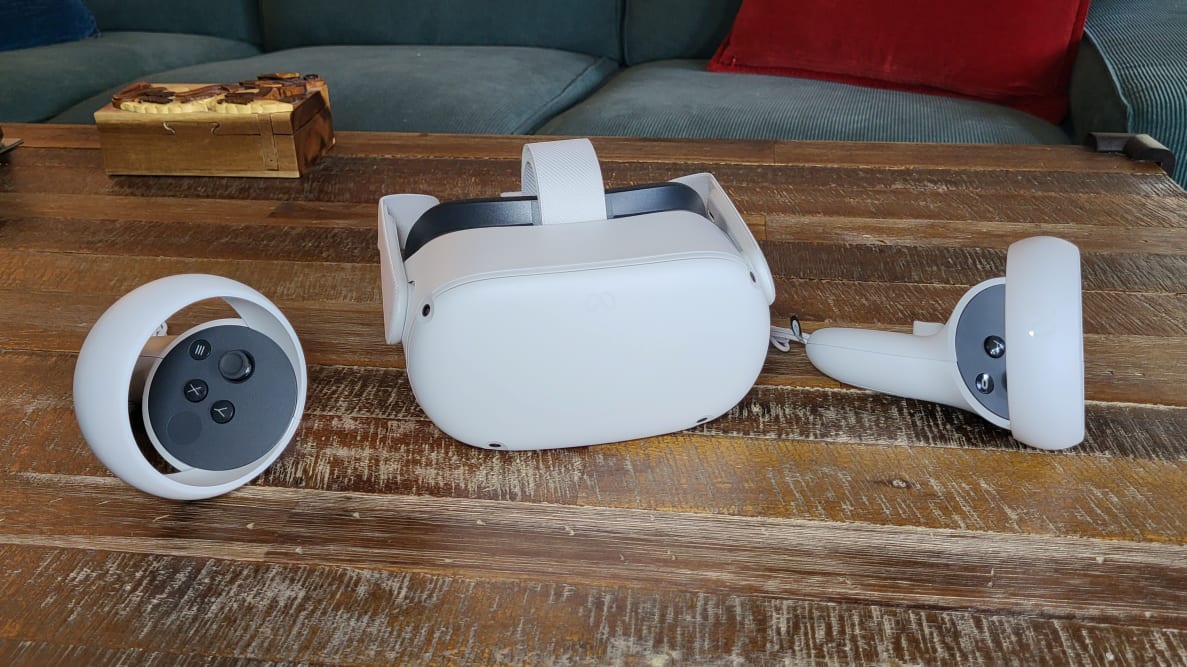Pros
-
Good-looking display
-
Powerful internals
-
Great value
Cons
-
Facebook integration
-
Only three hours battery
-
Limited adjustability
It's the affordable price tag, alongside good performance, that may be most compelling about the Meta Quest 2, making high-end virtual reality more accessible than ever. There are some compromises, but I think most VR enthusiasts will easily be willing to look past them.
Editor's Note (December 20, 2022): This review has been updated with the most current information, including pricing and storage, and to reflect the branding change from Oculus to Meta.
About the Meta Quest 2
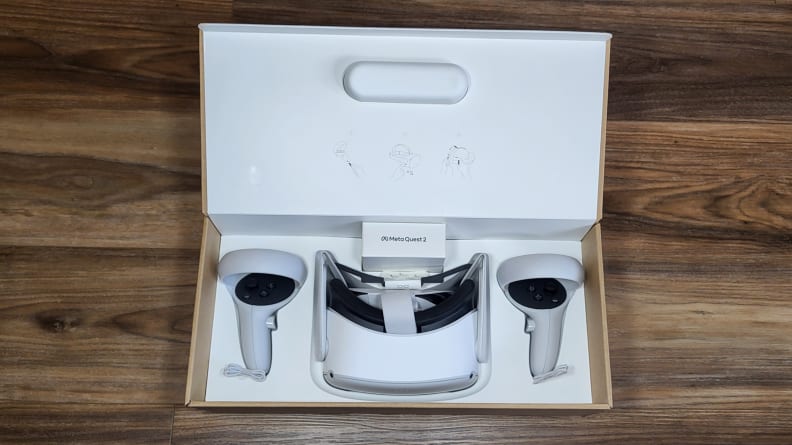
Before diving into the Quest 2, let's take a look at its basic specs:
- Price: $399 for the 128 GB entry-level model, $499 for 256 GB
- Weight: 503g (17.7oz)
- Tracking: Supports 6 degrees of freedom
- Storage: 128GB or 256GB
- Display: 90 Hz LCD display with 1,832 x 1,920 pixel resolution per eye
- Processor: Qualcomm Snapdragon XR2
- RAM: 6 GB
- Battery: 2-3 hours of normal use
Unlike the original Quest, which came in black, the new device only comes in a gray plastic, but it’s a friendly look. We’ll get into the design a little later.
The headset also has four cameras dotted around the front for things like hand-tracking and environment tracking. The hand tracking in particular is a cool feature (though it also came to the original Quest through a software update), allowing you to essentially ditch the controllers for basic tasks.
What we liked
A friendly design
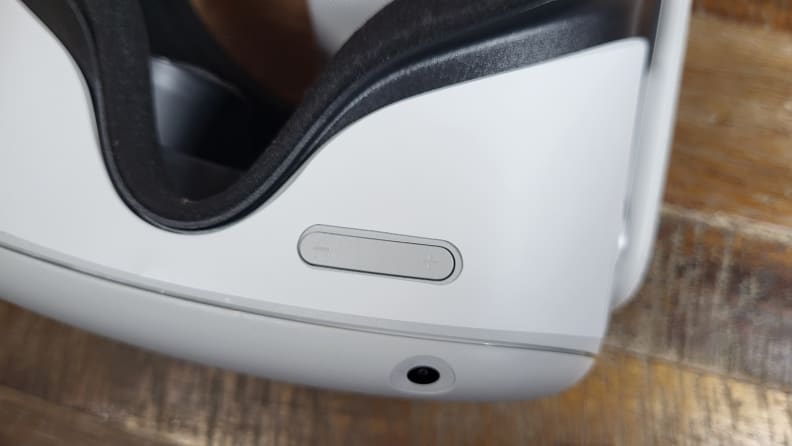
The original Oculus Quest looked fine, but in a world of black plastic tech, it’s nice to see the new Quest 2 taking a different approach. The new gray-with-black-highlights look makes the headset a little more approachable and friendly, even if you won’t see the design when you’re actually using it.
The overall shape of the Quest 2 will look immediately familiar to those who have seen or used a Quest before, but there are a few differences to the new headset. Most notably, the Quest 2 is smaller and lighter in almost every way which is, of course, welcome news. At 502 grams, it’s still not the lightest device to wear on your head but it's nearly 70 grams lighter than the original.
Part of the weight decrease comes in the form of a new soft strap, which replaces the part-plastic strap on the Quest. I found the new strap design easy to adjust, although the first time you do so, you may fumble around a little to figure out exactly where the adjustment points are.
On the front of the headset, you’ll find the four cameras used for tracking, while on the right side you'll find a USB-C port for charging and a headphone input. On the left, there’s a power button, and on the bottom, a volume rocker. The controls are a little tricky to find the first few times you use the headset, but you’ll get used to the placement.
The headset offers a relatively comfortable fit, too. The strap lets you get it set to your head size and shape, and there’s ample padding on the faceplate to allow for hours of wear. If you want an even better strap, you can buy the Meta Quest 2 Elite Strap for $50, which is said to enhance comfort and adjustability. We did not test it for this review.
The controllers are also a little different. They’re a bit bigger, but they still feel very natural in the hand. They both offer two triggers, along with a joystick and two buttons for gaming. The right joystick has a Home button, while the left has a menu button. The buttons are very well-placed, and you shouldn’t find the layout too confusing, even while strapped in.
Upgraded internals
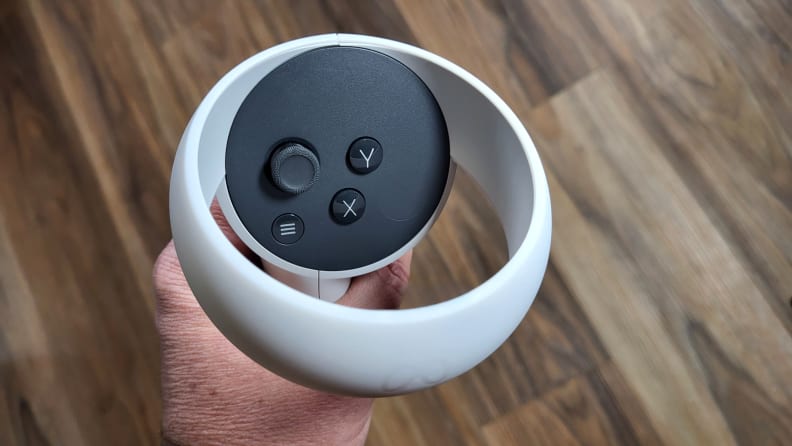
Apart from the display, which we’ll go into a little later, one of the biggest changes to the Quest 2 is the fact that it now offers a Snapdragon XR2 processor, which is a dedicated virtual reality chipset. That replaces the Snapdragon 835 found in the previous-gen model, which could also be found in smartphones and other devices.
Technically, the XR2 is capable of delivering features like 5G connectivity and 7 concurrent cameras, but the Quest 2 forgoes features like that. Instead, you’ll get faster load times and better graphics processing. Gaming is perhaps the main reason to get a virtual reality headset in the first place, and the XR2 is able to handle more graphics-intense VR games.
Indeed, the improved processing power is pretty noticeable. In conjunction with the better display, graphics just look a whole lot better on the Quest 2 than on the original Quest. Details are clearer, and everything looks more realistic. Playing games like the Vader Immortal series is more immersive than ever, and it's easy to get lost in a world—until you get jolted out by a dead battery.
Speaking of battery, it's still only three hours at most, which is the same as the last-gen headset. If you're playing for three hours, it's probably time to take a break and give your eyes a rest, anyway, but longer battery life would still be nice so you don't have to charge the headset after each use.
While the XR2 platform delivers better-than-ever graphics performance in a standalone VR headset, VR still has a long way to go. The games are awesome, but they’re not ultra-realistic just yet. It’s kind of like a Nintendo Switch, offering super fun gaming experiences, but doing so without the intense graphics performance we expect from the PS5 or Xbox Series X. That said, there isn’t a headset that offers that super realistic graphics performance just yet. There are more gaming-focused headsets, like PlayStation VR, but it’s still tethered to the PlayStation 4 for its performance.
A solid display
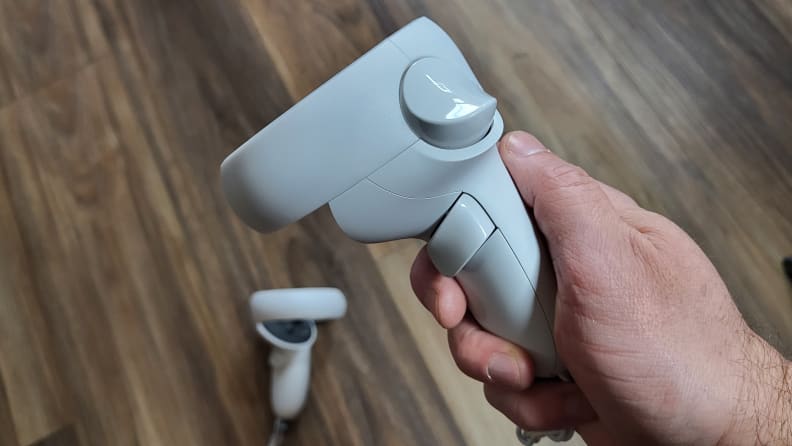
Meta has upgraded the display for the Meta Quest 2, and generally, it looks much better than before; though some aspects of it are a slight step backward.
Let’s start with the good. There’s a noticeably higher resolution, which helps eliminate the pixelated "screendoor effect" that was visible on the previous-generation Quest. It’s not totally gone, and an even higher resolution display would be nice, but we imagine that would present other issues around battery life.
The Quest 2 also supports a 90 Hz refresh rate, though there isn't any content to explore at the higher refresh rate just yet. At launch, only the Meta home environment and the browser run at 90 Hz, and while those aspects of the Quest certainly look smooth, the feature won’t really come in handy until it’s supported by games. Hopefully, that will happen in the near future. Pretty much everything else you do on the Quest will be limited to 72 Hz for now.
There is a downside to the new display, though. While the original Oculus Quest was OLED, the new headset swaps it out for LCD. The result is black-levels that aren’t as deep, and colors that are less realistic. It’s a trade I’m willing to make if it means higher resolution, but it would be nice to get the best of both worlds in the next iteration.
What we don’t like
Limited adjustability
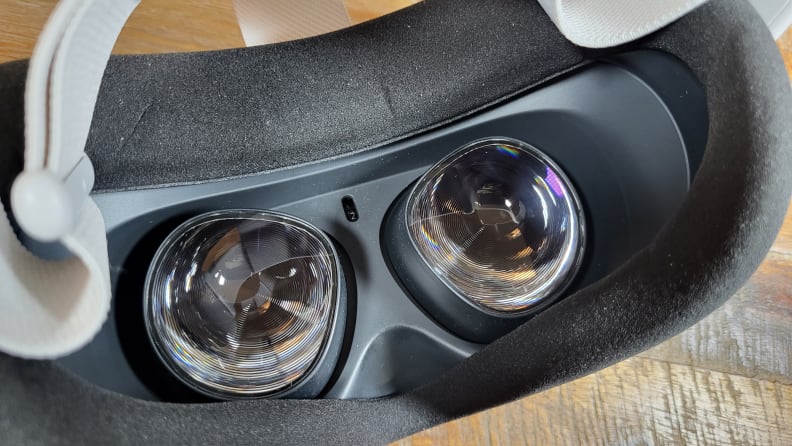
We mentioned that the Quest 2 has a solid display, and it does indeed have one solid display. That replaces the two displays (one per eye) in the original Quest, and it has some implications for adjustability.
Without getting overly technical, the original Quest allowed users to adjust the headset to their interpupillary distance (IPD)—the distance between eyes—any distance between 59 and 71mm with a slider. With the single display in the Quest 2, adjustments are more limited, allowing you to select from one of three different options.
I seemingly got lucky with the middle adjustment, which fits my IPD perfectly fine, but other reviewers have had worse experiences. If your IPD sits in between the three adjustments (58mm, 63, and 68mm), you may find some blur is introduced to the image. It shouldn’t be too much of an issue, but it would have been nice if Facebook kept the slider adjustments from the original headset.
Meta meddling
Speaking of Facebook, the controversial company absorbed Oculus in 2014, and since then it has been integrating Oculus more and more deeply into its own services. The Meta Quest 2 is the first Facebook headset that requires users to sign in to their headset with Facebook, instead of just using an Oculus account. Considering Facebook’s spotty-at-best track record with privacy, that is not good news.
Facebook goes a step further too. If you’re adamantly against Facebook’s use of user data over the last few years, you may be tempted to create a fake profile to use with the headset. But if you do so, be warned that if you’re deceit is discovered, you’ll lose any purchases you made on the Oculus store, and your headset may get completely bricked.
It’s currently unclear just how tightly a Facebook account and Meta use will integrate, but in our opinion, your Facebook status shouldn’t prevent you from being able to access the apps you've purchased.
The potential to abuse your data is even worse in Facebook-built social VR apps. For example, a report from Road to VR outlines that Facebook moderators would be able to invisibly monitor what users do in the Horizon social app. Not only that, but everything users see and hear is recorded on the headset on a rolling basis. It’s recorded on-device, but Facebook says that if a user is reported, the recordings are sent to Facebook to check for violations.
All that to say, Facebook is still in the business of collecting and using data, and you’re going to have to accept that if you want to use the Quest 2. Thankfully, Meta has since removed this requirement; now all you need to do is create a separate Meta account instead, circumventing the potential privacy concerns.
Should you buy the Meta Quest 2?
Yes, it's definitely worth it
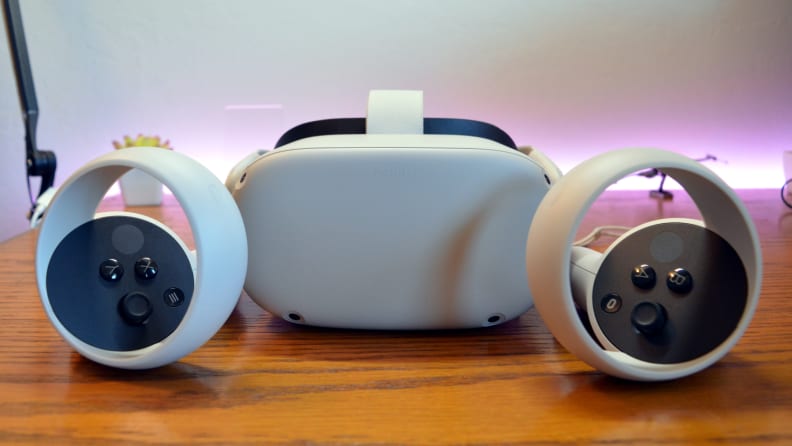
If you’re able to look past potential privacy issues and the idea that you might not be able to adjust the headset to your exact head shape, the Quest 2 is absolutely worth buying. Its display resolution beats many much more expensive headsets, plus it offers access to a huge range of apps that’s only growing, all for under $400.
It’s even worth considering if you have the original Quest. The Quest 2 is really quite a step up, especially for those who use their headset regularly. It may be worth waiting until developers update their apps to take advantage of the higher refresh rate and resolution, but that’s bound to happen at some point for the most popular apps, and hopefully new apps and games will support those things out of the box.
While not without its quirks, the Meta Quest 2 is the most compelling virtual reality headset to date. Apps and games are getting better and better, and the price is low enough for even casual users to get in. Virtual reality as a whole is still in its infancy, but on the Quest 2—and in 2020—it often beats actual reality.
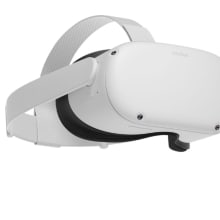
The Meta Quest 2 is still the best blend of hardware and value you can buy.
Meet the tester
Christian de Looper is a consumer tech journalist with over a decade of experience. De Looper has covered all areas of the consumer tech industry, from smartphones to smart homes — and has attended all of the major trade shows, including CES. De Looper has always been interested in consumer technology, but his love for gadgets and electronics blossomed into a full-blown passion when he started writing about it while completing his degree in audio production. Since then, he has written for many of the top tech publications, including [Digital Trends](https://www.digitaltrends.com/users/delooper/), [Tom’s Guide](https://www.tomsguide.com/author/christian-de-looper), [TechRadar](https://www.techradar.com/author/christian-de-looper), and many more. He loves getting his hands on all of the latest gadgets, but when he’s not reviewing tech, he can be found hanging out with his family or producing music.
Checking our work.
Our team is here to help you buy the best stuff and love what you own. Our writers, editors, and experts obsess over the products we cover to make sure you're confident and satisfied. Have a different opinion about something we recommend? Email us and we'll compare notes.
Shoot us an email
